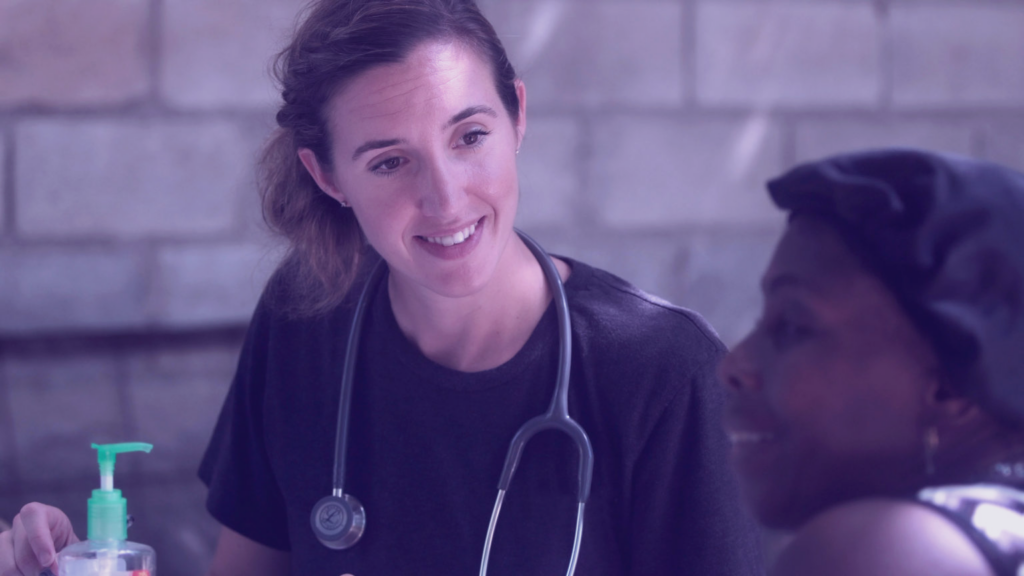With reimbursement rates hinging on the right scores, healthcare systems all over the country have become acutely focused on moving the needle on patient satisfaction. The patient experience has become the issue in healthcare today, and the case for change is clear. OSF Home Health was no stranger to wanting to improve their patients’ experience, but faced an obstacle they didn’t know how to get around—changing the beliefs of their staff.
“The results that we were delivering were simply awful.”
A.J. Querciagrossa, President & CEO of OSF Home Care Services
Challenge
In 2014, OSF Home Health was nearing the end of its second Successful team of doctors as a Pioneer Accountable Care Organization. Their patient satisfaction and quality metrics had been stagnant for years. Costs were high. Patients rarely saw the same nurse twice and OSF primary care physicians had no relationship with Home Health—even when the two organizations shared patients. Patient satisfaction languished in the 35th percentile. “The results that we were delivering were simply awful,” said OSF Home Care Services President & CEO AJ Querciagrossa.
The OSF team tried to implement change management efforts that rely heavily on checklists, complex action plans, and new SOPs, all of which are layered on top of staff already buried in action plans and checklists. When the new efforts didn’t stick, they tried folding in new action plans with stronger compliance measures. These were all implemented in an effort to coerce the desired behavior change. Unfortunately, this tendency to drive change landed the team into a leadership trap. AJ recounted, “Our belief was our scores were low because we were not doing ‘enough’ of the right things at the right time. We were in fact fixing the wrong problem, and we weren’t even aware of it.”
Solution
To create long-term, sustainable change leaders must first see the powerful, hidden phenomenon driving virtually all behavior inside their organizations. This great obstacle to change is known as “Belief Bias.” Belief Bias is the instinctive tendency that people have to validate their current worldview. We don’t walk around all day looking for ways to invalidate the beliefs we hold about how the world works. In fact, we selectively filter our experiences and look for evidence that suggests our current view of the world is correct, screening out all the other evidence that would suggest otherwise.
As AJ looked at his problem with home health nurses at OSF he recalled, “… in hindsight, our biggest challenge related to Belief Bias. We really had to take a step back and look at the beliefs that were eroding our ability to improve the care and service to patients and families.”
The nurses in AJ’s team held the belief that being assigned to patients by way of territory was the best approach and caused them to have to travel far fewer miles each month. The challenge with this belief was the nurses were always working with a variety of physicians, each with their own routines and preferences. This resulted in massive communication and alignment issues between physicians and nurses, ultimately leading to dissatisfied or frustrated patients. Strategically, AJ wanted to align nurses with specific physician practices, creating alignment around plan of care preferences and consistency with nurses visiting the same patient. The challenge was that his nurses’ belief bias around quality of life was overwhelming AJ’s great strategic thinking.
Not wanting to create tension with the nurses, AJ was left frustrated and seemingly unable to make a change over a span of many months. Finally, the situation reached it’s moment of truth, “We told our nurses, ‘We’re going to align you to the practice. We’re going to improve case management,’” Querciagrossa said. “And in response we were called every name in the book. They pretty much said, ‘Who are you to come in our region from corporate and tell us how to provide care? The care we provide is fine!’ The situation was volatile.”
The journey of addressing Belief Bias began.
AJ and his leadership team began articulating to their staff the belief they wanted them to hold about case management. We helped their leadership team leverage culture management tools to begin creating new experiences that went on to foster the desired beliefs. Those experiences included telling powerful stories about where the new case management philosophy was having great impact. The new experiences included communicating data that showed the impact of the new approach to case management on Home Health HCAHPS scores. The new experiences included offering recognition, both publicly and privately to those who began owning the new direction and sharing the data on improvements in care and satisfaction, leading to greater patient care and alignment around patient needs.
Furthermore, AJ and other leaders are also creating experiences by actually calling patients personally—and learning that an overwhelming number of patients know their nurses by name and are extremely complimentary about their work. In short, AJ and his team began applying simple and practical culture management tools to accelerate the shift in thinking. They began to water what they wanted to see grow!
Results
Belief Bias is a leader’s single greatest obstacle to creating meaningful and lasting change because people will not give up their existing beliefs very easily. That’s a big problem when it comes to getting people to change the way they think and act about healthcare. Leaders have to suspend Belief Bias to create a willingness to change in others. When that happens, people are more willing to consider new beliefs and are more ready to make the change. Suspending Belief Bias opens the window and accelerates change in the way people think and act. This means that any effective change process must first address the ability to suspend Belief Bias. Suspending and reorienting Belief Bias is the essence of managing organizational culture.
AJ Querciagrossa addressed the belief held by nurses by creating the right experiences. He created experiences for the staff by restructuring the physician/patient/nurse mix so that nurses were partnered with specific physicians. AJ also consistently shared the data along the way so the experience really landed in a way that would shift the belief.
After 13 months of reoriented Belief Bias in the direction of needed change, they started seeing:
• Patient satisfaction jumped from the 35th percentile to 73rd, and is still climbing.
• Average miles per visit dropped.
• Referrals from within OSF increased.
• Case managers empowered to set own schedules.
• Patients seeing just one or two nurses during an episode of care rose from 40% to 80%.
Once the nurses saw their time on the road decrease while patient satisfaction soared at the same time, they let go of their belief that had been preventing a seemingly common sense solution to the problem. The nurses at OSF Home Health wouldn’t think of going back to the old way now!
Had AJ and his team not effectively dealt with Belief Bias, their toxic culture would have eaten their new strategies for breakfast. Again.




